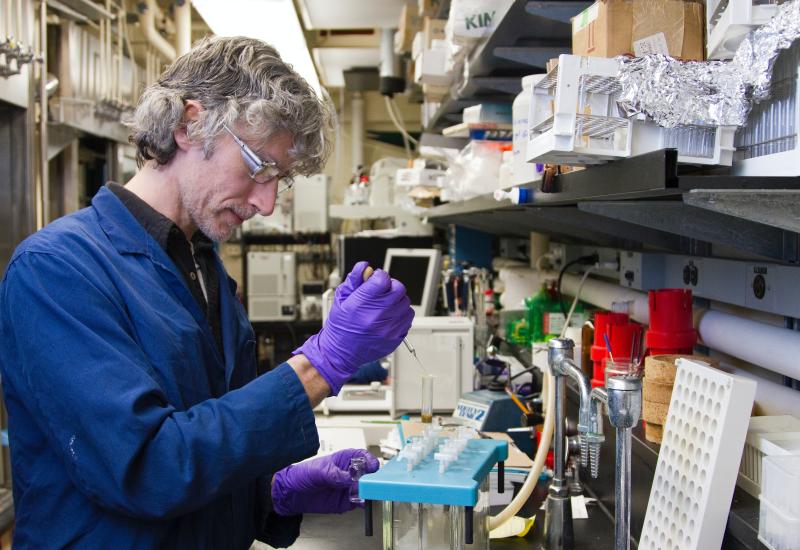
Astra's clash of the T-cell engager Titans
The Titan CD8-guiding technology seems to have spawned a new variant.
The Titan CD8-guiding technology seems to have spawned a new variant.

AstraZeneca's bold move to make T-cell engagement more precise, initially using a technology the group calls "Titan", has resulted in a new project that uses a fresh approach: AZD6621, a CD8-guided T-cell engager targeting Steap2, has just started its first-in-human study, according to clinicaltrials.gov.
The difference between this and two Titan-based T-cell engagers that entered clinical development over the past year is scientifically intriguing. However, a patent filing and poster at this year's AACR conference have revealed that the differences might merely represent a refinement of Astra's earlier approach, as the aim of the projects is similar.
In a nutshell, that aim is to reduce the propensity of T-cell engagers to cause cytokine-release syndrome (CRS). It's thought that CRS is largely derived from CD4+ (helper) T cells, and the problem might be that typical T-cell engagers like Columvi engage CD4+ as well as CD8+ (cytotoxic) T cells.
Selective CD8 targeting
This is where Titan, or target-induced T-cell activating nanobody, a technology Astra presented preclinically last year, comes in.
According to a LinkedIn post by Astra's senior vice-president Mark Cobbold, Titan aims to increase the specificity of the anticancer response by selectively engaging CD8+ T cells, which are characterised by the presence of the CD8 co-receptor, and make up a relatively small population of T cells.
While typical T-cell engagers comprise a bispecific antibody that hits a tumour-associated antigen plus CD3, the latter to engage T cells, a Titan-based project uses a multispecific approach. This involves designing a molecule with domains against the T-cell receptor (TCR) and the CD8 co-receptor, as well as two tumour-targeting domains.
The first Astra project that used this design was the anti-CD20 molecule AZD5492, which entered the clinic a year ago, and this was followed by AZD9793, which targets GPC3.
Now comes the anti-Steap2 project AZD6621, whose prostate cancer trial began this month. This molecule was apparently patented last year, and the patent filing also describes it as a CD8-guided T-cell engager, but one with an affinity-optimised CD3-binding domain instead of one targeting TCR.
Disclosed AstraZeneca molecules targeting CD8+ T cells
| Project | Tumour target | Target 2 | Target 3 | Description | Status |
|---|---|---|---|---|---|
| AZD5492 | CD20 | CD8 | TCR | CD8-guided T-cell engager (Titan tech) | Ph1 Titanium trial in r/r NHL & CLL started Sep 2024 |
| AZD9793 | GPC3 | CD8 | TCR | CD8-guided T-cell engager (Titan tech) | Ph1 Rhea-2 trial in solid tumours started Mar 2025 |
| AZD6621 | Steap2 | CD8 | CD3 | CD8-guided T-cell engager (TED4 design) | Ph1/2 Activated-4-PC trial in prostate cancer started Oct 2025 |
| AZD6750 | (None) | CD8 | IL-2 | CD8-guided IL-2 (fusion protein) | Ph1/2 +/-rilvegostomig in solid tumours started Jul 2025 |
Source: OncologyPipeline.
An AACR poster also revealed that the various targeting domains are arranged differently on AZD6621 versus the first two Titan projects, and the anti-CD8 moiety takes the form of a "guiding arm" rather than a fragment within the antibody. Astra's patent calls this design TED4, which apparently stands for tetraspecific T-cell engager DuetMab.
Essentially, however, the aim is the same, and since CD3 is part of the TCR complex it could be argued that the TED4 and Titan approaches are very similar.
Astra also uses CD8-guiding in a fourth molecule, AZD6750. However, this isn't a T-cell engager but rather a fusion protein that aims to deliver IL-2 specifically to CD8+ T cells.
The company appears not to have publicly disclosed any other CD8-guided T-cell engagers in its pipeline. Given the speed at which this programme has progressed, however, further clinical trial entrants should be expected imminently.
2517













